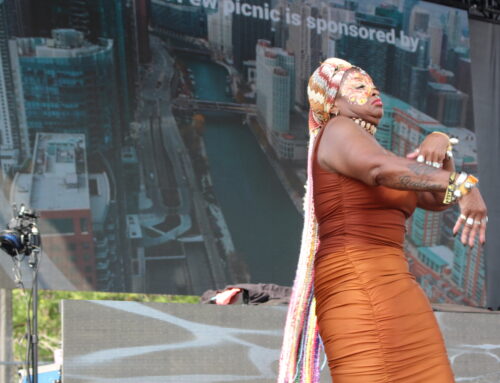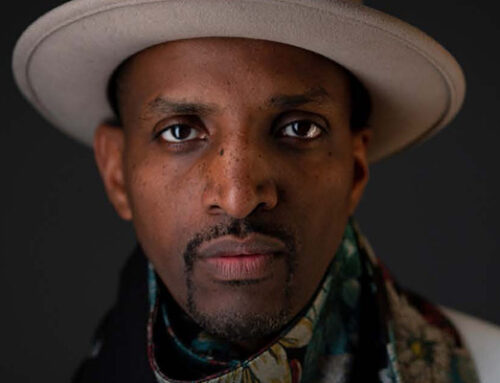Northeastern Illinois University has grown to become one of the most diverse state institutions of higher learning around the country. The school’s student enrollment includes African American, Latino and Asian students. The main campus is located on 67 acres in the North Park community along with four satellite campuses including the Jacob H. Carruthers Center of Inner City Studies in the Bronzeville community.
For the first time in 151 years of the university’s history, the first African American President takes the helm. Dr. Gloria Gibson was appointed March 15 this year and began her three-year term on June 1.
Born and raised in of East St. Louis, Illinois, Dr. Gibson has served several decades as an educator. She earned her bachelor’s and master’s degree at Southern Illinois University at Edwardsville, where she studied music education. While teaching music in Alton, Illinois, she decided to pursue her doctorate’s and earned a Ph.D. in Folklore with a concentration in ethnomusicology from Indiana University in Bloomington.
Before coming to NEIU, she served as provost and senior vice president for Academic Affairs at Morgan State University. She says it feels good to replant her feet back in Illinois and to become the first African American president of a prestigious institution that also has deep roots in the Bronzeville community.
“The Caruthers Center is an essential part of Northeastern University. The programs that offered there, the faculty, staff, and students there are central to the mission of the institution. NEIU is one of the most diverse institutions not only in the state but the nation. We take pride in the Caruthers Center and the history that is there. The founders of that center and the fact that it’s a strong educational facility and a pillar for the Bronzeville community,” Gibson explained.
Currently, NEIU boosts a healthy Hispanic population at 33 percent, 11 percent African American student enrollment and 8 percent Asian American students which comprise of 60 percent of enrollment.
“We also have international students. So, we’re very proud of our diversity. It’s one of the points of pride for the institution as we are ranked in US News and World Reports certainly top 10percent of institutions when we look at the issue of diversity.”
Dr. Andrea Evans Ph. D. is the Director of the Jacob H. Carruthers Center for Inner City Studies at Northeastern Illinois University. Formerly the Dean of the College of Education at Governors State University in Chicago’s south suburbs she is a Chicago native. Taking over the position as the new director of the Carruthers Center has brought a significant meaning to her as an educator and returning Southside resident.
“This role, this position, and this place put me right in the community. I have lived in this area before. My kids went to school in this area, so it’s like coming home. It’s about being part of things like the parade, being a part of the Caruthers Center and the legacy of the center.
All the work and activism that has taken place in the building makes me feel that I’m breathing rare air and feeling a part of a real legacy in the African American community in Chicago by being in this building and this place. I’m excited about being home and being here and what we can do in the city going forward,” she says.
In 2015, Illinois state lawmakers were facing a significant budget deficit which resulted in a legislative stand-off with Governor Bruce Rauner and Speaker Michael Madigan. During the next two years, it would be a tug-of-war between Rauner and House Democrats in passing the state budget which affected thousands of students attending state-managed institutions.
NEIU was one of the campuses affected by the budget crisis–currently putting the pieces back in place.
Dr. Evans admits they are not at their capacity, but she says, the goal is to get more students “to know this place, know they can go to school–a university close to home.”
Understanding the challenges ahead, she is optimistic about their goals with an approved budget in place. “We have a lot of work to do in that regard. That’s one of my primary goals to say this is a state institution. It’s in your community on the Southside. You can go here, and you can start here and finish your degree here. That’s part of my goal. The other thing is to not get far away from the community. To have a place where people can come to hear speeches whether it was Ida B. Wells or Paul Roberson. It’s been that place for decades.
Gibson agrees, “The budget impasse did affect some institutions, not just NEIU. I feel very fortunate upon my arrival, and the budget passed, and the governor signed that budget. In one year, it can’t replace the budget cuts that we suffered, but we are recouping from that. We did receive a small increase. We did receive funding for our new education building, so we will be discussing how we might move forward with that. Two things are important to me and very important to my presidency. The first is access.
I think it’s essential universities understand that they must provide access to students to pursue their education. That access includes all students, but we are particularly concerned about first-generation students and students of color.”
Renovations are currently underway at the Carruthers Center of Inner City Studies to help modernize the building and attract more community programming along with young enrollees. To help students cope with financial aid and assistance, NEIU provides a financial aid advisor on site. This Fall, the center will host a series of financial literacy workshops and programming to prepare high school students early to gain access to monies and scholarships.
Both women will be participating in the 89th annual Bud Billiken Parade as Honorary Grand Marshals and look forward to being a part of history. This year will be Gibson’s first parade, and she’s excited. “I saw pictures from previous parades. It looks awesome. They’re waving, having picnics, networking; children are running around. I can’t wait.”
Evans and her husband have fond memories of past parades with their children.
“One memory is just bringing my kids here and finding a space early in the morning, setting up along the route. After we left here, we made sure to bring them back to this space to share something that is part of our heritage. My husband’s heritage goes back to King Drive to his grandmother’s porch as a young boy waiting for the parade to come down the street,” she reflects. “It’s part of our family, and my children look forward to it. If they can’t be here, they watch it on television — the beauty of it all–the music, the dancing, the bands. It’s such a wonderful experience for all of it. I’m looking forward to being a part of it.”
Note: This article was originally published in the inaugural issue of Bronzeville Life Vol. 1 for August/September 2018.







Dr. Gloria Gibson is NEIU’s first Black, Female President.
The late Dr. Ronald Williams was NEIU’s first Black President from 1976 to 1985.